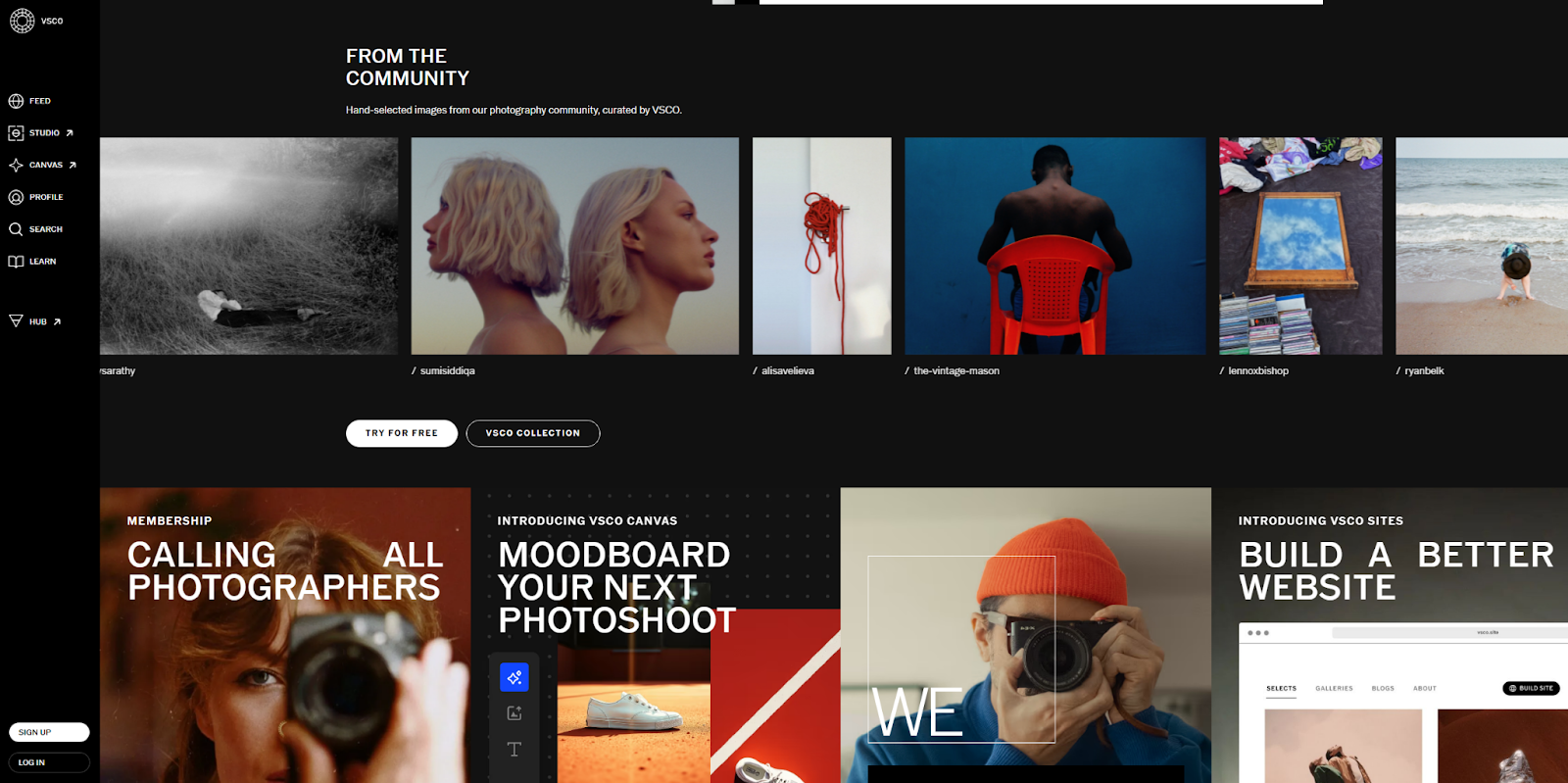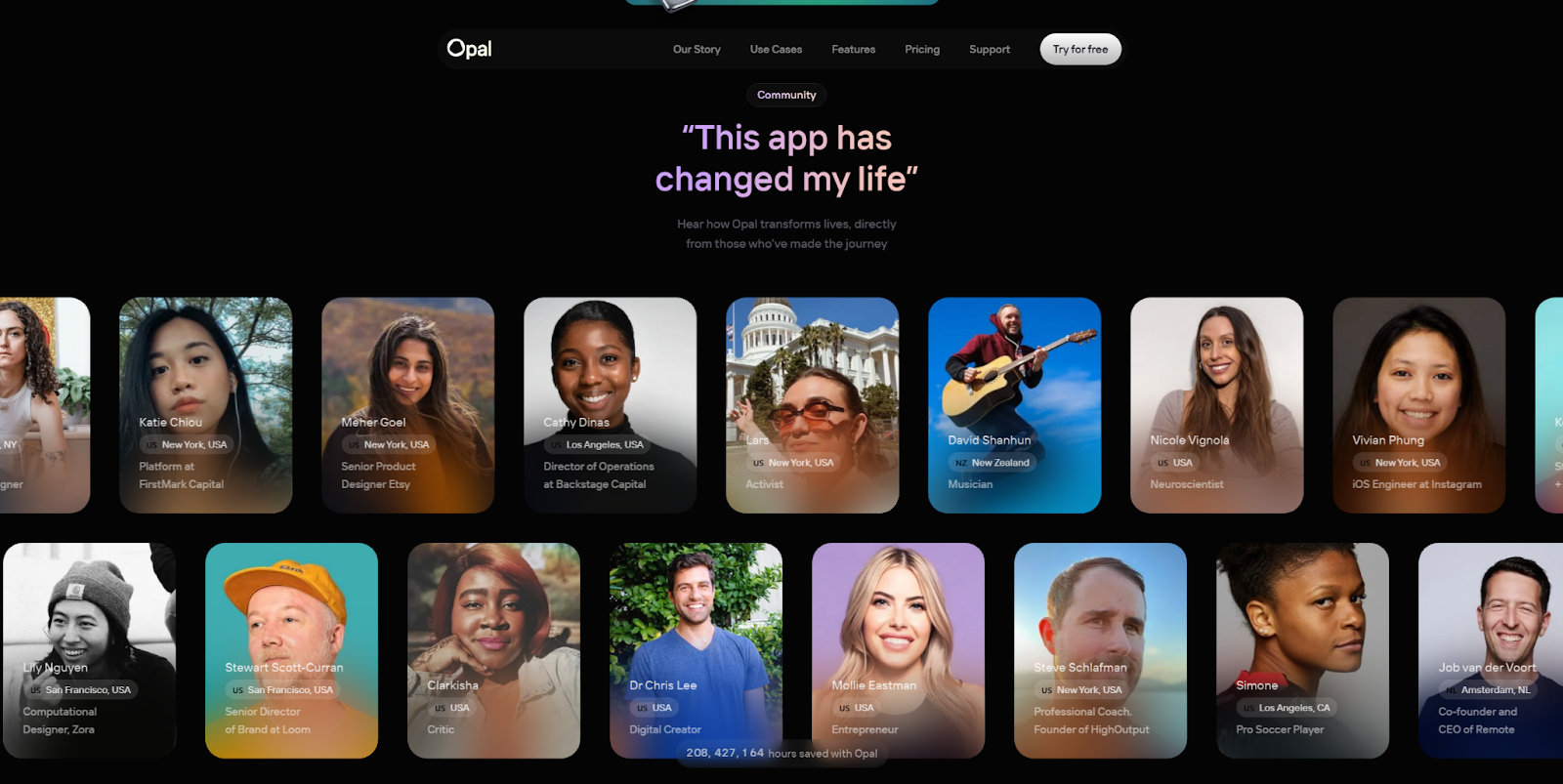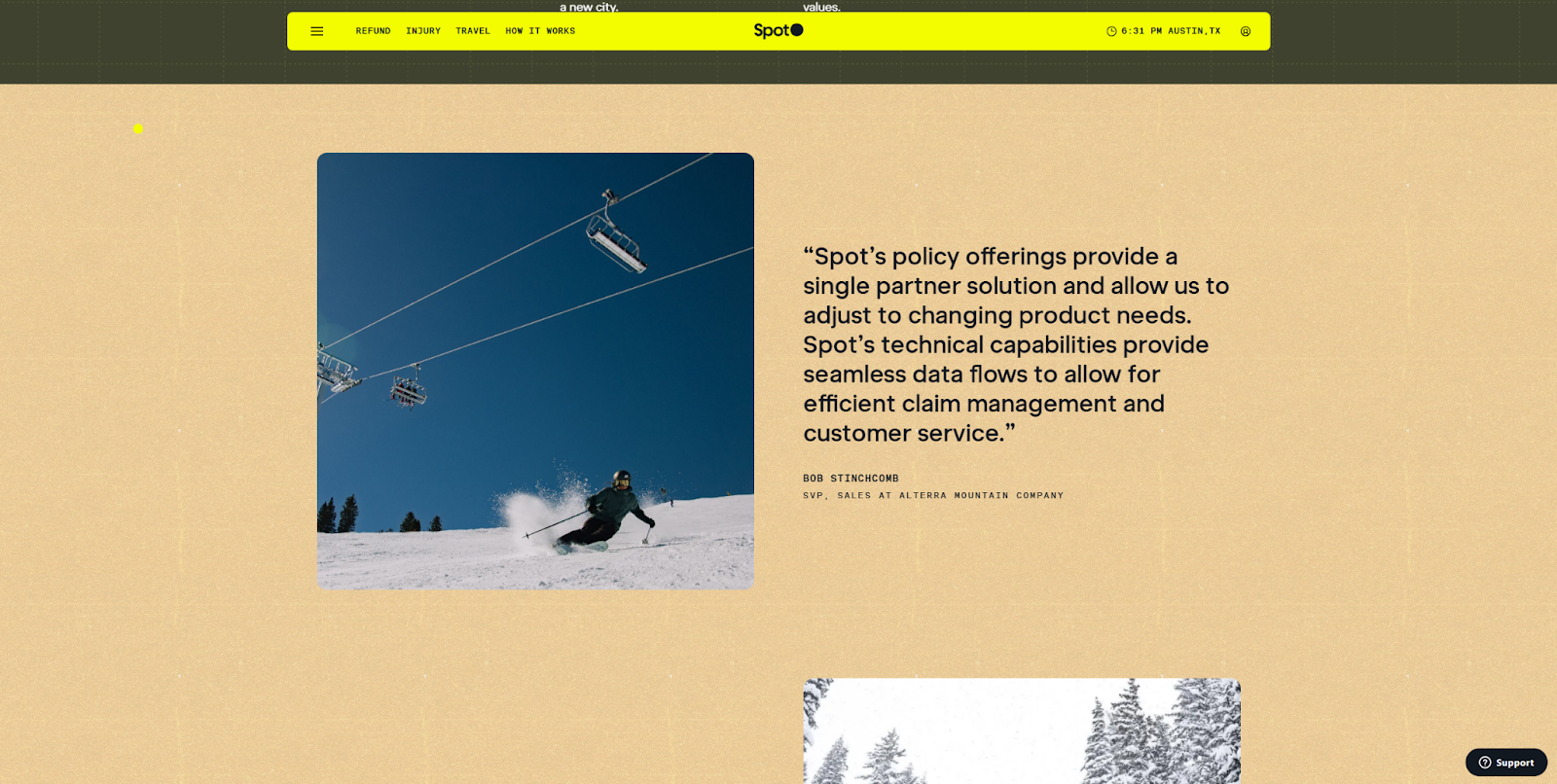Boost your marketing strategy with user-generated content that adds authenticity and enhances brand awareness.
High-quality interactions are one of the cornerstones of a great website, and by leveraging user-generated content (UGC), you can engage your visitors and turn them into brand ambassadors. UGC humanizes your website by allowing users to contribute with testimonials, product reviews, and media, like photos or videos. You can use UGC to incorporate authentic experiences created by real people who use your product or service, showcasing their brand loyalty and inviting potential customers to engage.
It takes time to build a platform that supports user-generated content, and even more time for creators to do their thing. That’s why you should establish a UGC marketing strategy that incentivizes influencers, content creators, and enthusiasts — the more motivated your users are, the sooner your UGC will get up and running.
Ultimately, integrating UGC into your web design can help better engage your loyal customers and drive conversions. In this blog post, we’ll share our tips for incorporating user-generated content into your site. But first, let’s explore what UGC is.
What’s user-generated content? An overview
UGC can take many forms, like testimonials and product reviews or photos and social media posts. Essentially, anything a customer creates while using or showcasing a product can become user-created content. UGC acts as social proof, showing potential customers how existing customers are already engaging with your product or service.
A UGC marketing plan involves offering customers special incentives for creating content about your product or service. For example, consider Coca-Cola’s #ShareACoke hashtag campaign on Instagram and TikTok, which went viral in 2013 and was brought back in 2025 for a new generation. They invited customers to take a picture while sharing a Coke with someone and offered an all-expenses-paid trip to Hawaii for the best one. Millions of social media users, influencers, and content creators spread the word, leading to a massive boost in social commerce and brand recognition.
Benefits of sharing user-generated content
UGC invites customers to become brand ambassadors by showing off what they can do with a product. If you can find the right way to implement UGC in your website design, here’s what it can offer your business:
- Creates a community of engaged customers who feel they’re contributing to the product’s success, encouraging brand loyalty and word-of-mouth advertising.
- Streamlines content marketing by pulling content from UGC creators to use in email campaigns, social media posts, and your webpages.
- Collects data from your target audience as you discover the sometimes surprising
ways they use or talk about the product, leading to other content ideas and new marketing strategies.
Types of user-generated content to incorporate on a website (plus UGC tips)
Here are some types of UGC you can implement in your designs, along with tips on how to best leverage your user base.
Customer reviews and ratings
The most common type of UGC is short-form reviews and ratings from real people who’ve purchased something. Reviews offer customers a way to share what they liked and didn’t like about a product, giving you valuable feedback while also engaging potential leads.
Testimonials
Customer testimonials are more in-depth product reviews that speak to specific use cases. For example, a staffing agency’s website might include a testimonial from a client who used their service to hire employees. It could mention how smooth the recruiting and onboarding experience was, the quality of their new hires, or the ease with which they could troubleshoot issues. A potential client might consider all these factors when selecting an agency, and a detailed testimonial proves that the service meets those needs.
User-submitted photos and videos
A gallery of user-generated photos and videos shows what your product actually looks and acts like. As long as those images portray the product positively, they can add authenticity that confirms what you say about the product in your promotional materials.
Q&A and forums
Forums and interactive Q&A sections give customers a platform to help each other troubleshoot issues or discover new reasons to enjoy a product. However, forums can be tricky to manage. You’ll have to establish community guidelines and moderate posts regularly to ensure conversations stay civil and on topic.
Polls and surveys
Adding interactive content like public polls and surveys to your website gives you some of the benefits of product reviews and testimonials without the moderation required of forums. Users select prewritten answers that don’t require moderation, and survey responses are sent directly to the marketing team. After the poll has closed, you can share the results on your site.
Guest blog posts
A blog is a great way to enhance your content marketing strategy, and you can build it out even further by getting popular guests to contribute. Well-written blog articles written by industry veterans, content creators, and even micro-influencers can all impress potential customers who might be familiar with them.

Content management, meet visual design
Create the content structures you need, add content (by hand, from a CSV, or via our API), then design it visually. Finally, a content management system that works for editors, designers, and developers.
4 UGC examples: How to use UGC on your website
Here are four websites that provide examples of how to use UGC to drive more conversions and generate brand awareness.
1. VSCO

VSCO is a video and photo editing platform that connects creators to people who need their work. Their website was created by product designer Jan Losert. If you scroll down to the end of the landing page, you’ll notice custom UGC elements. The “From the Community” section shows off several pieces from real users, and clicking any entry takes you to that creator’s page, where you can browse more of their work. This marketing strategy highlights VSCO’s healthy relationship with content creators and influencers while showing off what their tool can do.
2. Opal

This website for Opal from Our Life’s Work employs a unique UGC strategy. Rather than highlighting short-form, user-made content on their site itself, the Opal homepage features a moving gallery of dozens of faces of happy users at once to optimize screen time. Clicking on a user takes you to their social media profile on Instagram, TikTok, or X (formerly Twitter) and shows you a testimonial they posted about Opal. This process portrays a harmonious relationship between a client and their customers, boosting their social proof.
3. Spot

Spot provides event insurance to trip coordinators and other experience-based businesses. The website Muhammad Dilshad Khaliq made for them commits significant space to endorsements in the form of testimonials. These longer written reviews provide detail and context that helps build trust with specific target audiences, making them a great form of UGC to add to your marketing strategy if your brand leans toward a certain niche.
4. Modyfi

Modyfi is a platform that specializes in cross-functional collaboration between designers and illustrators, meaning it requires a marketing strategy that speaks to a dynamic audience. First, the homepage highlights features that each user segment might want, like animation and editing tools. Then, Modyfi provides a gallery of impressive user-generated content. This approach shows off what makes their tool unique and highlights the work of UGC creators behind the scenes.
Boost engagement with authentic user-generated content
UGC adds a touch of authenticity to your web design, humanizing your brand image. But to get started turning everyday users into brand ambassadors, you need to establish a system for gathering and publishing user-generated content, and the Webflow CMS can help.
By using Webflow’s content management system, you can create reusable web components that you can then populate with high-quality, dynamic UGC, such as customer reviews and user-generated images. Then, import all your UGC simultaneously with CSV files that keep everything organized.
Learn more about what your team can do with Webflow from Webflow University.

Get started for free
Create custom, scalable websites — without writing code. Start building in Webflow.

























